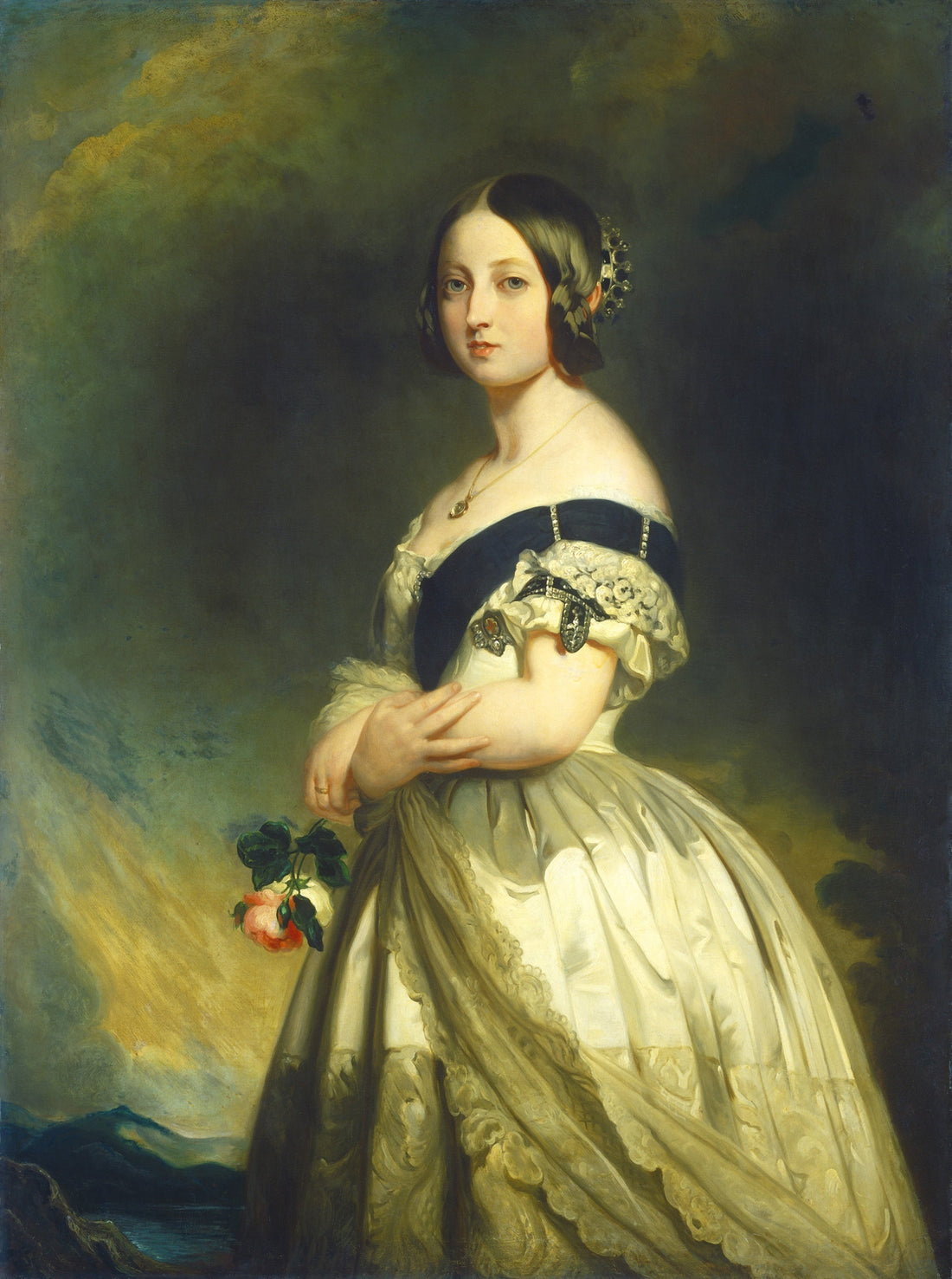
Jewelry of the Victorian Romantic Era
Share
by Kat Paulick
Victoria was crowned Queen of the United Kingdom in 1837 at eighteen years old, inheriting the throne after the death of her uncle. The following decades would see enormous transformation in Europe and all over the globe, and the world Victoria left in 1901 was very different from the one she was born into. Because of the length and scope of her reign, when it comes to jewelry, the Victorian era is divided into three sub-periods: the Romantic (1837-1861), the Grand (1860-1880), and the Aesthetic (1881-1901).
Queen Victoria and Prince Albert, 1851
The Romantic period began with the beloved young queen's courtship with Prince Albert, whom she married in 1840. Victoria was enamored with Albert, and the UK, awash with romance, embraced feminine, sentimental jewelry. The queen's engagement ring featured a gold serpent set with an emerald and her birthstone. Snakes were a popular symbol of everlasting love and one of many sentimental motifs at the time, along with hearts and love knots decorated pendants, rings, and brooches.
Acrostic jewelry became a fashionable way for lovers to signify their relationships. In this style, the initials of each gemstone in a piece spell out a romantic word, such as "dearest" (Diamond, Emerald, Amethyst, Ruby, Emerald, Sapphire, Turquoise). Another unique trend was jewelry made from human hair. Victoria was a fan of this style, and a life-size portrait of her made entirely from human hair was displayed at the 1855 World's Fair in Paris.
Daguerreotype of Woman, 1858. Image: SMU
At the beginning of the century, jewelry was handmade. Throughout the century, many technological advances changed how jewelry was produced and consumed. In 1842, electroplating, a process of coating base metals with precious metals, was invented, and gold plating became common.
The Industrial Revolution created many jobs, leading to a growing middle class. The increase in mass production made jewelry more affordable. Women surpassed men as the primary wearers of jewelry and wore a lot of it. These factors led to an enormous volume of jewelry being created and a diversity of styles and materials never before seen.

1850s Bohemian Garnet and Pearl Brooch. Image: The Gemmary
Jewelers practiced repoussé, hammering malleable metals into designs and cannetille – crafting wire into intricate shapes. Popular gems included agate, amethyst, diamond, emerald, garnet, malachite, quartz, topaz, and turquoise, often in rose, old mine, and cabochon cuts. Tiny seed pearls were woven into floral clusters.
Seed Pearl Parure, Tiffany & Co., 1850s. Image: Sotheby's.
Large brooches were paired with matching bracelets. Girandoles – drop cluster earrings – gained favor as hair trends shifted from bonnets and ear-covering twists to styles that exposed earlobes. Many women wore ferroniéres – simple chains around the head with a gem dangling in the middle of the forehead. In place of purses, women wore chatelaines, belt-like chains that suspended tools and belongings from their waists.
Victorian Chantelaine, 1863. Image: Antique Trader
The Romantic period saw a surge in Middle-Age nostalgia and a revival of Renaissance styles. Archaeological expeditions sparked interest in ancient cultures, and styles featuring Roman-influenced micromosaics, lava rock from Pompeii, and coral were popular souvenir items. After Queen Victoria and Prince Albert purchased their Balmoral estate in Scotland, Victoria began to favor the multi-colored agate jewelry made in the region, leading to a surge in its popularity. She also adored cameos, which saw a resurgence in popularity.
The Romantic era ended in 1861 with Prince Albert's premature death. A trend-setting queen and her nation went into mourning, and as cultural priorities shifted, so did jewelry styles. In the following article, we'll explore the jewelry of the Grand Era.




